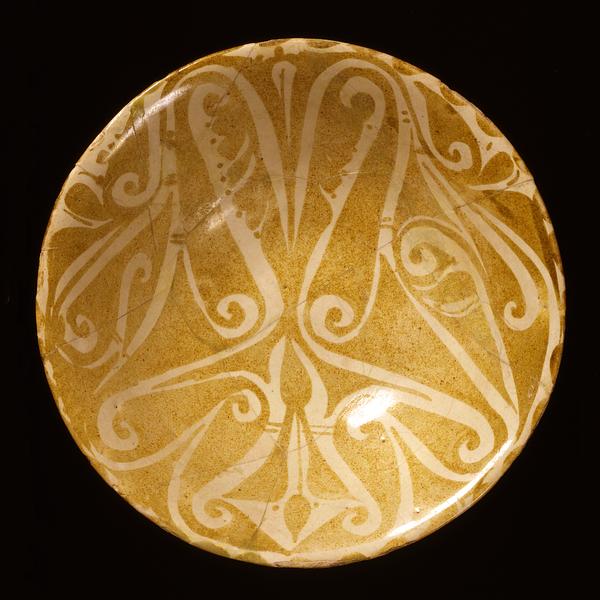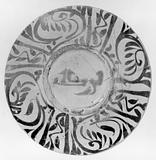Earthenware bowl, painted in lustre over an opaque, white glaze
Iraq; 9th-10th century
H: 6; Diam: 20.5 cm
During the period when Iraqi potters discovered the white-glazed pottery that was later to be known as faience, they also began to use the lustre technique. Lustre consists of metal oxides applied to pottery that has already been fired. The piece is fired again at a lower temperature in a reduced-oxygen atmosphere, and the ultra-thin decoration takes on a metallic look that can range from copper to gold.
The bowl’s fantastic palmette decoration is a two-dimensional version of the Samarra style, in which naturalistic models are almost dissolved, making it difficult to differentiate between pattern and background.
Inv. no. 26/1962
Published in:
C .L. Davids Samling. Fjerde Del : Jubilæumsskrift 1945-70, København 1970, cat.no. 31, pp. 118 and 152;
The arts of Islam : Hayward gallery, 8 April - 4 July 1976, London 1976, cat.no. 265;
Art from the World of Islam. 8th-18th century, Louisiana, Humlebæk 1987, cat.no. 26;
Kjeld von Folsach: Islamic art. The David Collection, Copenhagen 1990, cat.no.63;
Oleg Grabar: The mediation of ornament, Princeton 1992, pl. 1 (acc.no. mistakenly given as 14/1962);
Kjeld von Folsach, Torben Lundbæk and Peder Mortensen (eds.): Sultan, Shah and Great Mughal: the history and culture of the Islamic world, The National Museum, Copenhagen 1996, cat.no. 65;
Kjeld von Folsach: Art from the World of Islam in The David Collection, Copenhagen 2001, cat.no. 106;
Sheila S. Blair and Jonathan M. Bloom (eds.): Cosmophilia. Islamic Art from the David Collection, Copenhagen, McMullen Museum of Art, Boston College, Boston 2006, cat.no. 76;
Matthew D. Saba: “Abbasid lusterware and the aesthetics of 'Ajab” in Muqarnas, 29, 2012, fig. 12, pp. 205-206;
Kjeld von Folsach: Flora islamica: plantemotiver i islamisk kunst, Davids Samling, København 2013, cat.no. 20;


